How to Increase Your Domain Authority?
You know domain authority (DA) matters. And the higher it is, the better for your site.
But how is the authority score determined? How high is high enough? And which are the most effective best practices to increase your domain authority?
Most importantly, with close to 2 billion websites on the internet today, does a high DA give you a fighting chance against the competition?
Read this post to get these answers.

Why You Need to Learn How to Increase Your Domain Authority
In this section, we will discuss the benefits of learning how to increase your domain authority.
An increase in your domain authority signifies the growth of your business.
As we’ll see, domain authority is based on the quality of backlinks on your website. And this has a compound effect on your marketing strategy.
Learning how to increase your domain authority will lead to:
- Increase in referral traffic
- Improvement in your search engine rankings
- Increase in organic traffic
- Increase in brand awareness
- More trust in your industry expertise
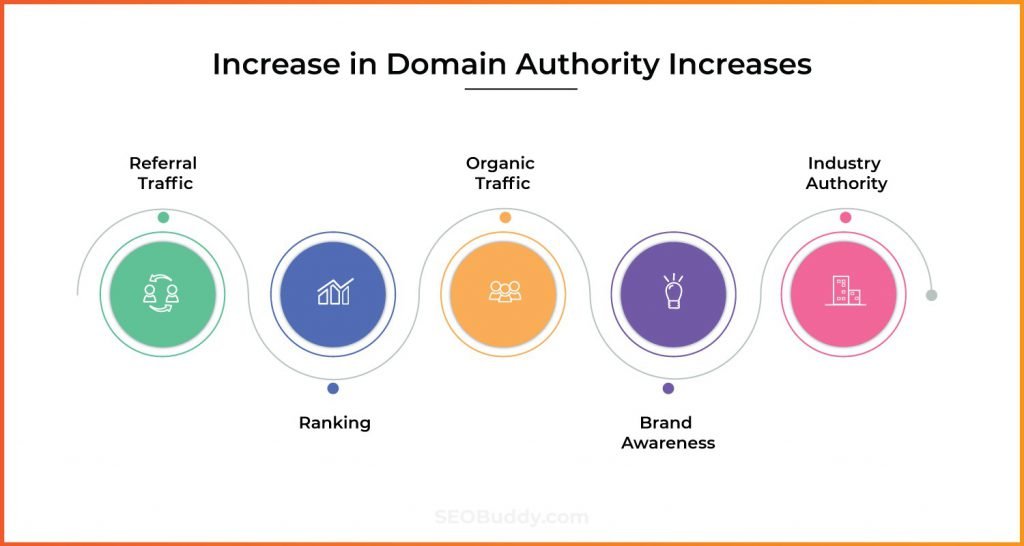
Clearly, learning how to increase your domain authority has multiple benefits.
Let’s discuss this metric and how to improve it in more detail.
What is Domain Authority?
Before getting into the details of how to increase your domain authority, it’s important to understand what it actually is.
Domain authority is an authority metric created by Moz. It predicts how well a website will rank on search engines.
The DA score ranges from 1 to 100.
A domain authority score closer to 100 indicates a higher likelihood of ranking high on search engine result pages.
It also indicates a high relevance of your website within your industry.
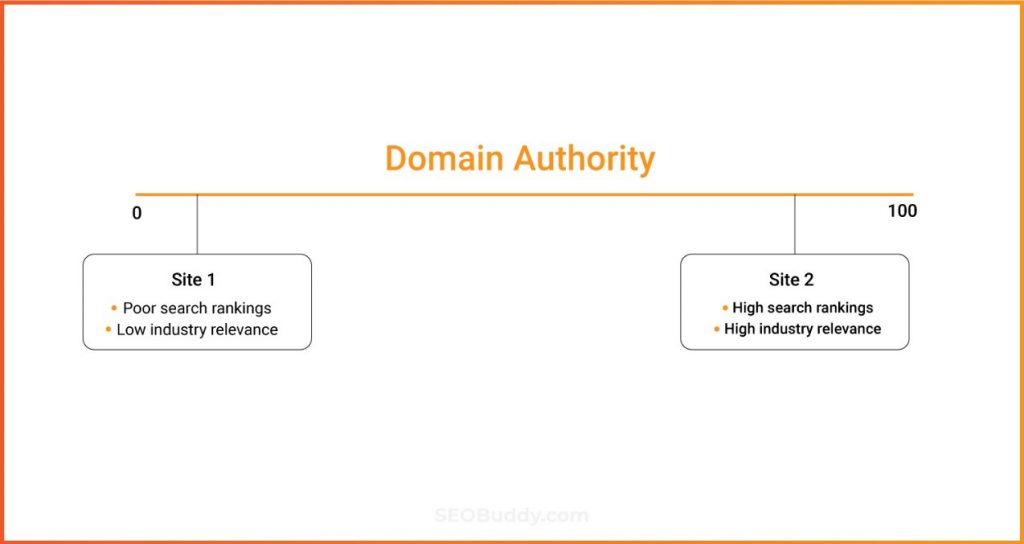
A score that’s closer to one indicates low chances of ranking on SERPs and lower relevance.
Why Does Learning How to Increase Your Domain Authority Boost Your Ranking?
Domain authority depends on the quality and number of links pointing to your site. Or the health of your backlink profile.
Google’s PageRank, on the other hand, is a ranking factor that determines the ranking of a web page on Google search results.
PageRank is based on the quality and quantity of links pointing to it.
It is one of the key elements of off-page SEO.
PageRank uses a score based on a logarithmic scale with values that range from 0 to 10. But your website’s PageRank score is inaccessible to you.
Domain authority works along the same lines as Google’s PageRank.
It uses the strength of a site’s backlink profile to determine its authority. This provides a reliable indication of how your website will perform on Google SERP.
Why Does Domain Authority Rely on Backlinks?
Backlinks play a major role in learning how to increase your domain authority for one main reason:
Most websites will link to a site only if it has good content worth linking to. This makes backlinks a reliable method of measuring a website’s authority.
If you have enough backlinks from relevant websites, it shows that these sites trust the quality of your content. And this will reflect in your domain authority.
How Does a Healthy Backlink Profile Look Like?
Mastering how to increase your domain authority can lead to an increase in your ranking on Google.
But this will not apply if the increase in your backlinks is caused by black hat tactics.
Black hat link-building tactics are methods that exploit Google’s optimization rules. They enable a website to rank higher on SERPs than it normally should.
Backlinks gained through black hat tactics do not help improve user experience.
A good example of black hat link building is the use of link farms to increase backlinks.
A link farm is a website that contains multiple links to other websites but lacks good content that provides value to its audience.
The sole purpose of link farms is to help a website increase page rankings. This often attracts penalties from Google.
To avoid deindexing, maintain a healthy link-building strategy.
Here are the features of a healthy backlink profile that will guide you as you master how to increase your domain authority.
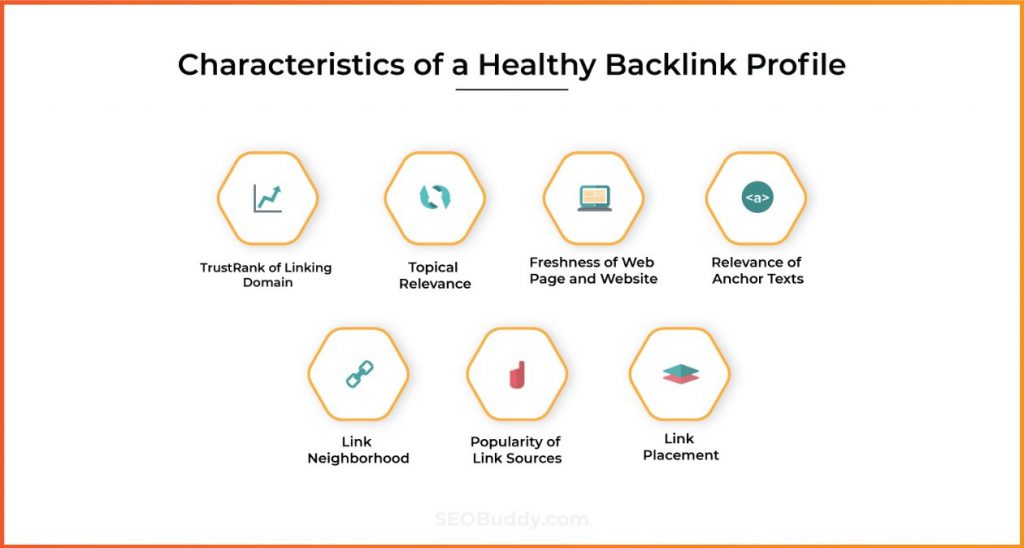
Let’s discuss each of these one by one.
1. TrustRank of the Website

Build backlinks from reputable websites within your industry.
A link from a website with a high reputation will pass more value to your website. It will improve your DA.
Reputation is not easy to measure. But the general assumption is that a reputable website will have a good domain authority and a high TrustRank.
It’s important to pay attention to the page authority as well.
Page authority is the score that predicts how well a page will perform on SERP.
Like domain authority, page authority ranges from 1 to 100. Higher scores show a higher ability to rank.
A link from a high authority page will pass more value to your site.
2. Topical Relevance
Make sure the links you place or get are relevant to the page’s content.
If you have an article on SEO and get a link from a page talking about cars, the link will not be relevant.
3. Page and Website Freshness
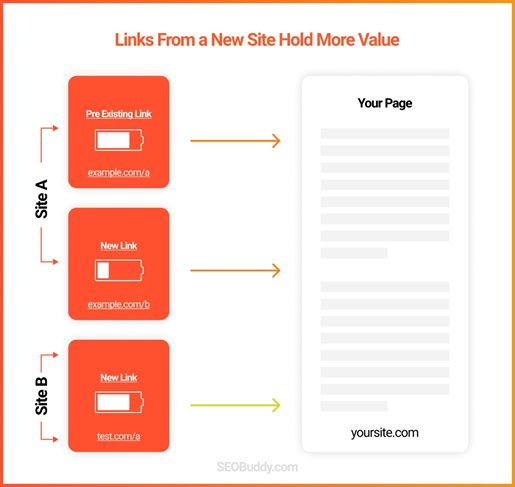
Backlinks from web pages with fresh content will carry more value than links from old content.
Links from websites that post frequently will also carry more weight than dormant websites.
4. Relevant Anchor Texts
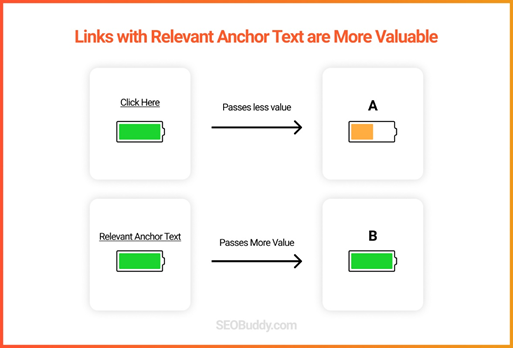
Stick to relevant anchor texts.
When a user comes across a link to your text, the anchor text should tell them what to expect in the linked post.
This means the anchor texts used in your backlinks should be semantically relevant to the content on your web page.
Anchor texts like ‘click here’ are irrelevant.
5. Good Link Neighborhood
Spammy websites and websites with adult content are examples of bad link neighborhoods.
These kinds of referring domains will not help your domain authority but only cause more damage.
6. Popularity of Linking Website
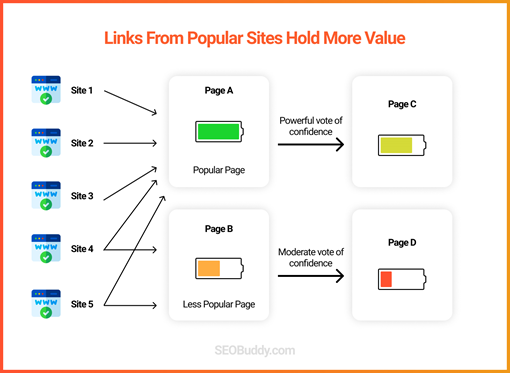
A link from a popular page will add the most authority to your website. They pass a valuable vote of confidence to your website.
To gauge the popularity of a website, check the number of backlinks it has. The more, the better.
7. Link Placement
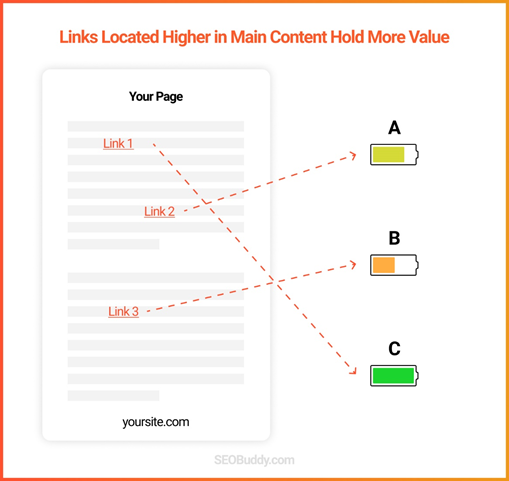
Google considers the first link on a page as the most valuable.
Links placed higher up in the content will carry more weight than links placed lower on the page.
How the Domain Authority Metric Can Help
Besides indicating your search ranking potential, how else can domain authority help?
Here are a few ways.
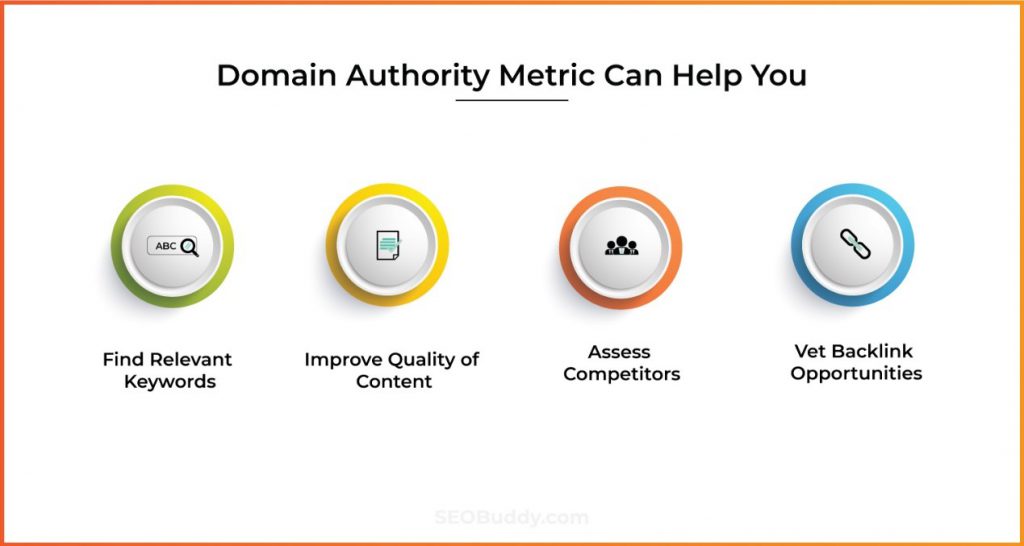
Aids in Keyword Research
Domain authority will help when researching keywords that you have the highest chance of ranking for.
Here is how that works.
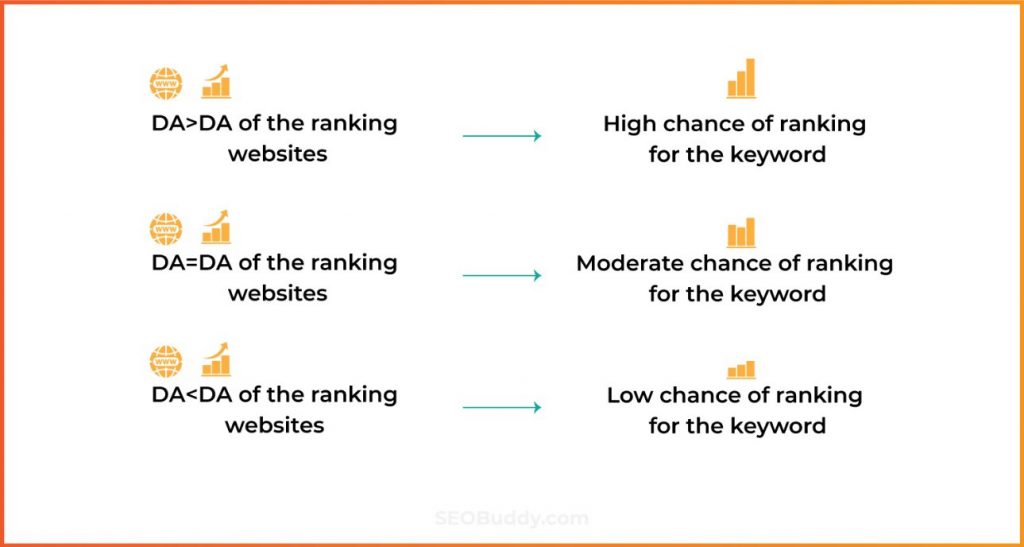
- If the DA score of your website is similar to the scores of the websites ranking for your desired keyword, optimizing your site for that keyword would likely result in a high SERP ranking.
- If you choose a keyword where you’re competing against websites with a lower domain score than yours, it means optimizing for that keyword will result in a high ranking.
- If you’re competing for the same keywords with websites that have a higher DA score than yours, you’re not likely to rank.
Helps You Improve the Quality of Your Content
A DA score provides a compass that helps you create better content for your website.
This is because a high DA indicates that other websites find the content on your website good enough to link to.
When you regularly monitor your DA, you get to know if the content you’re writing meets the quality needed to rank high on SERPs.
However, keep in mind that there is a lot to SEO besides keyword selection and great content.
Use this detailed SEO checklist to fully optimize your site for search engines.
Helps Benchmark Your Website Against Competitors
Use domain authority to check your website’s health compared to other websites in your niche.
A high DA score shows your website has a better chance of performing well on search engines.
It also indicates that your website has useful and relevant content that is trusted within your industry.
If your score is lower than your competitors’, it means their website has backlinks from sites with stronger link profiles.
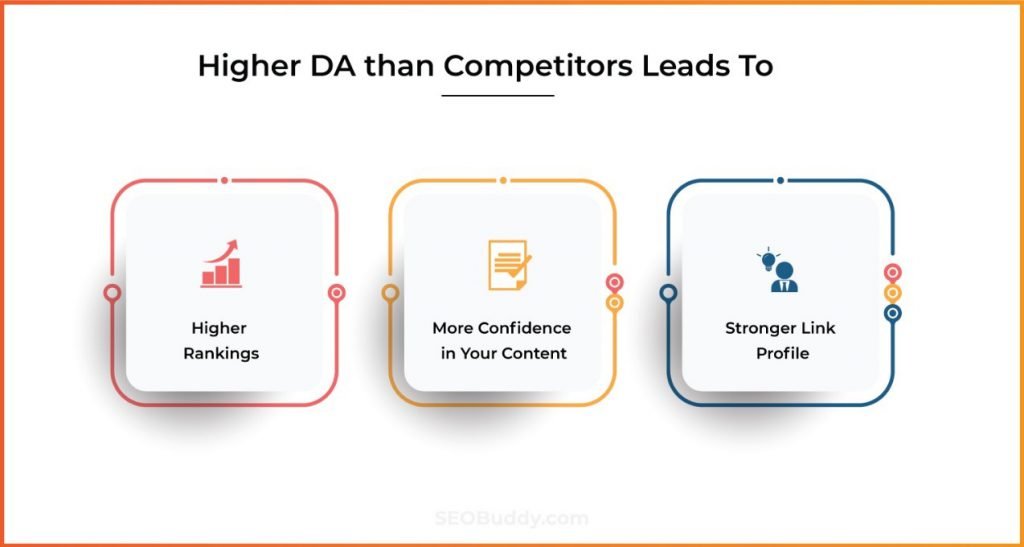
Analyze their backlink profile for untapped link opportunities. Use these opportunities to increase your score.
Helps Find the Best Websites for Backlinks
Domain authority is one of the most important parameters that you should consider when vetting sites for link building.
An increase in high-quality links will increase your site’s DA and search rankings.
The quality of a backlink can be assessed by its domain authority score.
The higher the domain authority of a website, the more valuable the backlink will be for your own domain authority and search rankings.
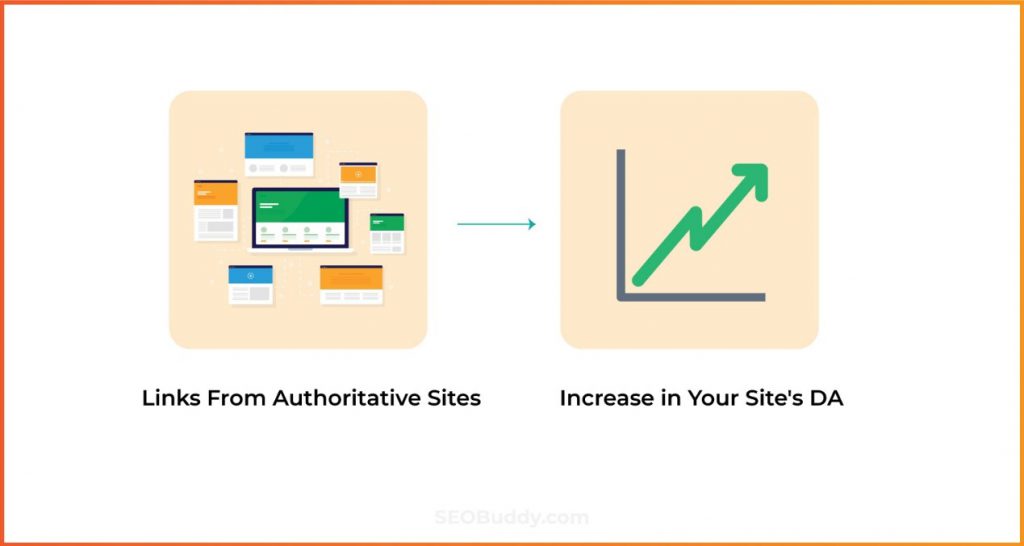
How to Check Your Domain Authority
Find out your DA score first before applying these tips on how to increase your domain authority.
How to Check Domain Authority Using Moz
One of the easiest ways to find out your website authority score is using Moz’s free domain analysis tool.
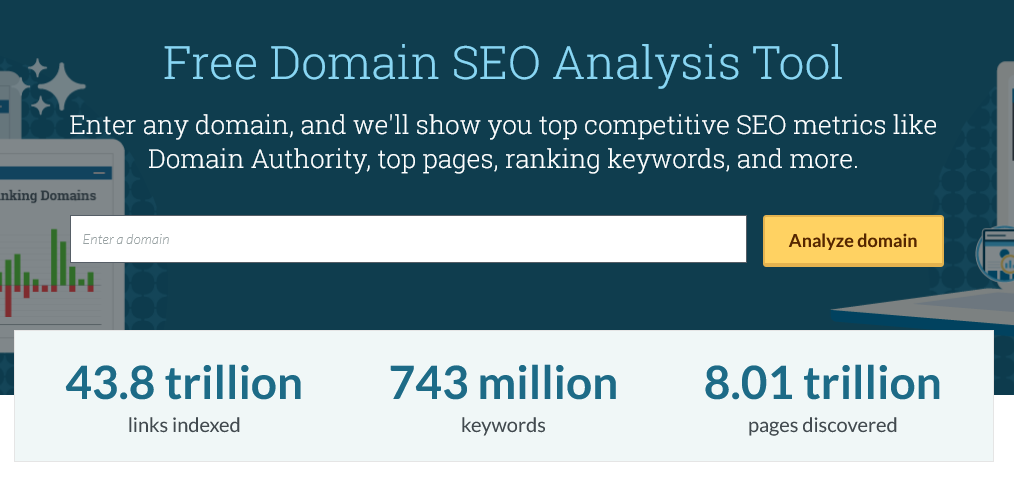
Add your site’s URL in the field provided and click ‘Analyze domain’. The tool will show you your site’s DA score.
Moz also shows other helpful metrics like:
- The most authoritative pages on your website based on the number of links
- The top domains linking to your website
- The different keywords your site is ranking for
- Your website’s spam score – Spam score is the percentage of websites similar to your site that have either been banned or penalized by Google. A spam score that’s below 30% is good.
Here is Moz’s DA score for the Apple website. It has an excellent score of 99.
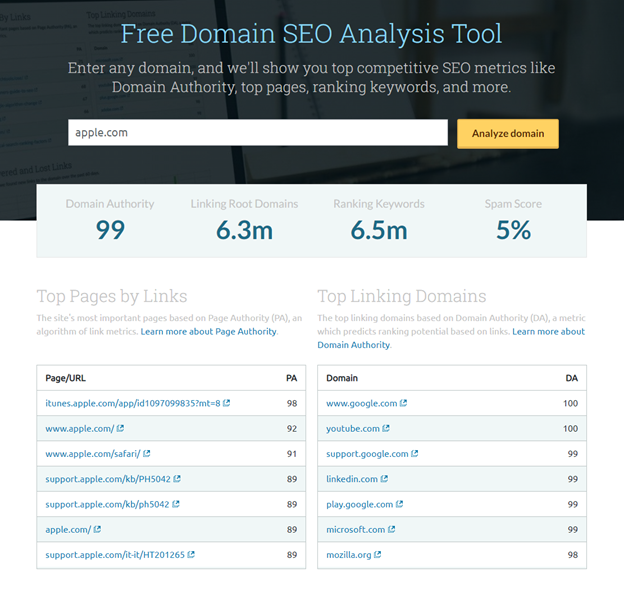
Alternatively, you can install the MozBar Plugin.
The MozBar Plugin lets you see the domain authority and page authority of each result on the SERP.
Just by having one look at SERP you can assess how difficult it’ll be to rank for a specific keyword.
Here is an example of the keyword phrase ‘dog food in New Jersey.’
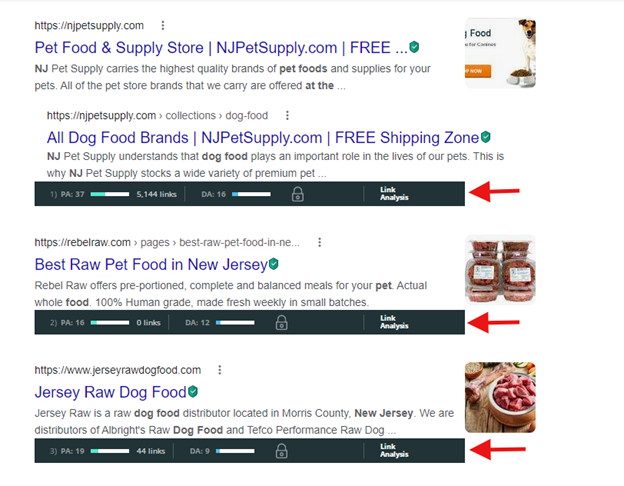
Notice how each result has a page authority and domain authority below it.
How to Check Your DA Using Ahrefs
You can also use Ahrefs Website Authority Checker.

Ahrefs Website Authority Checker analyzes the strength of a site’s backlink profile and gives a score between 1 to 100.
Like Moz, simply add the URL of the website you want to check and click the ‘Check website authority’ button.
We checked Apple’s domain rating and the score is 97.
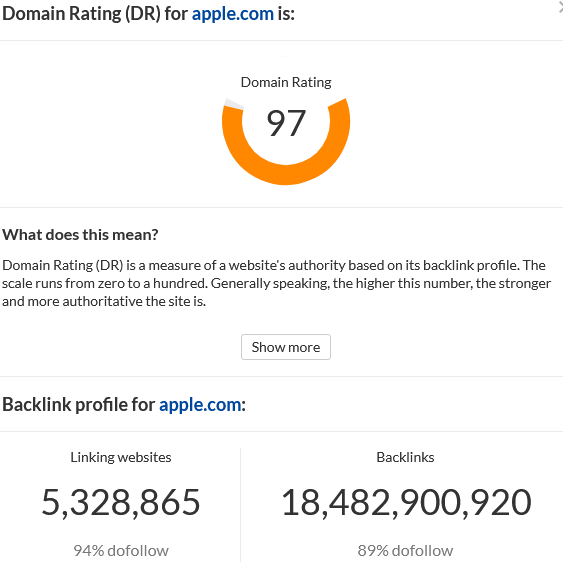
Pro Tip: Whenever you use the Moz DA score to assess the best websites for backlinks and there is a tie between two sites, use the Ahrefs tool to make your final choice.
How Can You Tell a Domain Authority Score is Good?
Want to learn how to increase your domain authority? Understand what counts as a good DA score first.
Generally, a DA score above 50 is considered good. A score between 40 and 50 is average. A score less than 40 is not so great.
But this shouldn’t be the criteria you should use in determining if your DA score is good enough or not.
Here are two factors that you should consider when assessing your DA score.
1. The DA Score of Your Competitors
You shouldn’t look at your score in isolation. When learning how to increase your domain authority, your competitors’ DA is critical.
This is because Moz’s DA scoring system is not a grading system.
A DA score shows your site’s ability to rank within your competitive landscape. So it’s best to target a DA score that’s higher than your direct competitors.
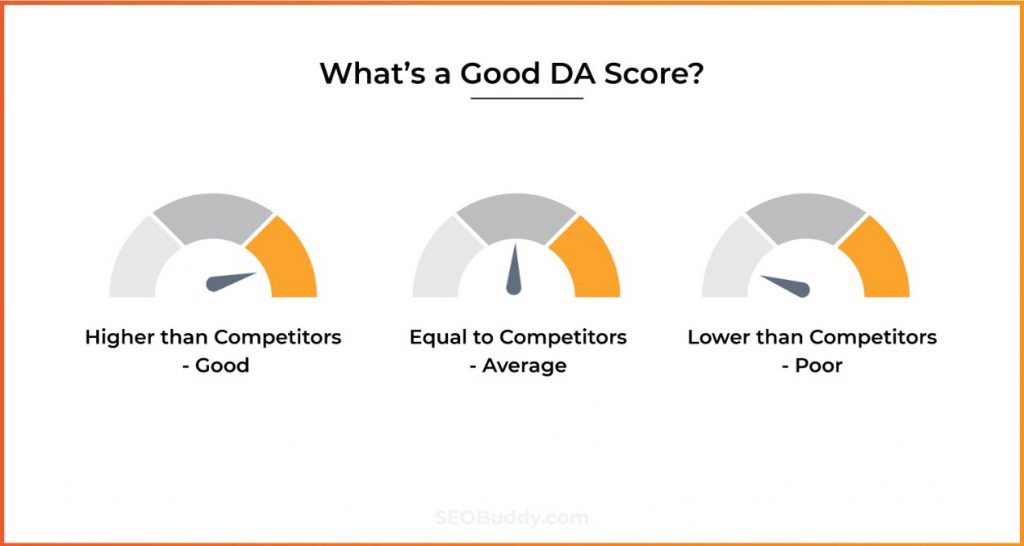
2. How Long Your Website Has Been Live
For a brand new website, the domain authority begins at one. The score will increase with the increase in the number of quality backlinks.
So, if your website is new, its DA score could be as low as 20. An established and authoritative website can have a high DA of above 80.
In such a case, your low DA isn’t absolutely bad. You just need more time to practice the tips on how to increase your domain authority.
What Can Cause Your DA Score to Drop?
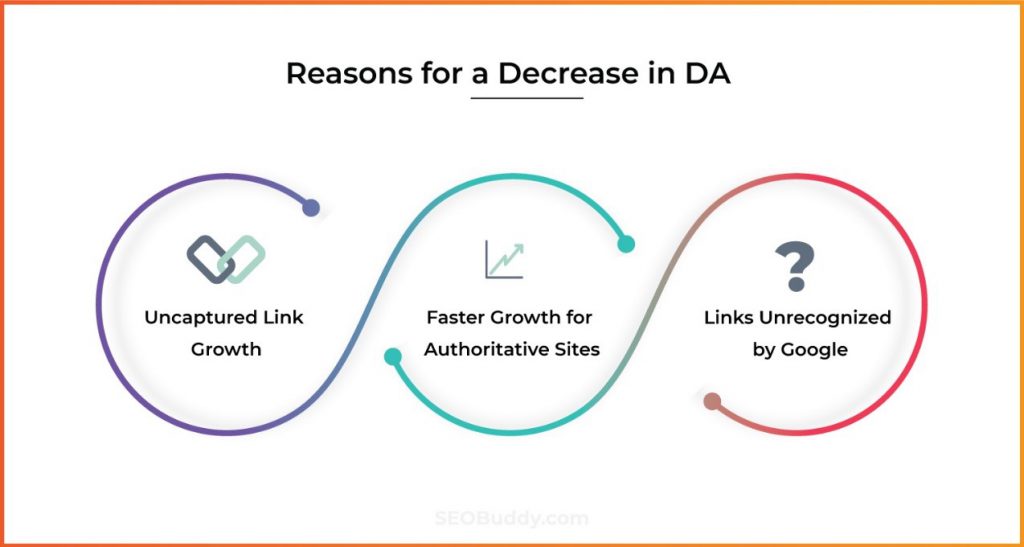
You could be practicing all the tips on how to increase your domain authority and still your DA score drops. There are three main reasons this could happen:
1. The Web Index is Yet to Capture Your Link Growth
Moz updates its index monthly. The data it collects for the index update takes three to four weeks to process.
This means the DA score you see is based on the state of your backlink profile 21 days ago.
It does not capture the recent growth in your link profile. Any link growth you’ve had in the last 21 days will only reflect in the next index.
2. Sites with Higher Authority Had a Faster Growth in Their Link Profile
You could have done a great job putting all our tips on how to increase your domain authority into action.
But if the higher authority sites have grown their backlink profiles more aggressively, it skews the scaling process.
As mentioned earlier, domain authority is measured on a 1-100 scale.
Once the top sites optimize their backlink profile substantially, their score can’t go beyond 100.
There can only be a higher standard for DA 100, and this affects the entire scoring process.
You’ll need an equally high growth in your link profile to move your score from 80 to 90 as you would for moving it from 98 to 99.
3. The Increase in Your Links is From Sites Not Recognized By Google
You could have backlink growth. But if it’s not from sites that contribute to Google search engine rankings, it’ll not increase your domain rating.
The Moz indexing algorithm is based on Google’s ranking system.
This means the backlinks that Google ignores, Moz ignores as well. These can be backlinks from:
- Spammy sites
- Link farms
- Websites irrelevant to your industry
- Blog comments and discussion forums
How is Domain Authority Calculated?
You can’t effectively learn how to increase your domain authority if you don’t understand how it’s calculated.
Several factors come into play when determining a website’s domain authority. They vary from one tool to another.
How Moz Domain Authority Checker Calculates DA
When you use Moz to check your domain authority, the main factors that affect the score include:
- Number and quality of referring domains.
- Root domains. Moz considers the total number of unique backlinks. If you have 50 links from the same website, it is considered as one root domain.
- Trustworthiness of the website linking to your website. For instance, links from high authority sites and reputable organizations will work in your favor.
- The website’s on-page SEO performance. This involves things like site structure and user-friendliness. If Moz predicts your site is likely to rank high on SERPs, your website will have a higher DA score.

Note that the domain authority score is based on a logarithmic scale.
It checks your website’s link popularity compared to other websites in Moz’s database. And this popularity is plotted on a 100-point scale.
How Ahrefs Website Authority Checker Calculates DA
If you’re using Ahrefs your score will also be based on a logarithmic scale.
Some of the factors that affect your Ahrefs score are:
- The number of unique root domains linking to your website with a dofollow link. The second and subsequent links from the same website do not increase your domain authority.
- The authority of the referring domains.
- The number of unique domains the website links to. A dofollow link from a website that rarely links to other websites is favorable.
- Changes in domain authority of the website linking to your website. If there’s an increase, your site’s authority will also increase.

Ready to learn how to increase your domain authority?
How to Increase Your Domain Authority Score
Here are three actionable tips on how to increase your domain authority.
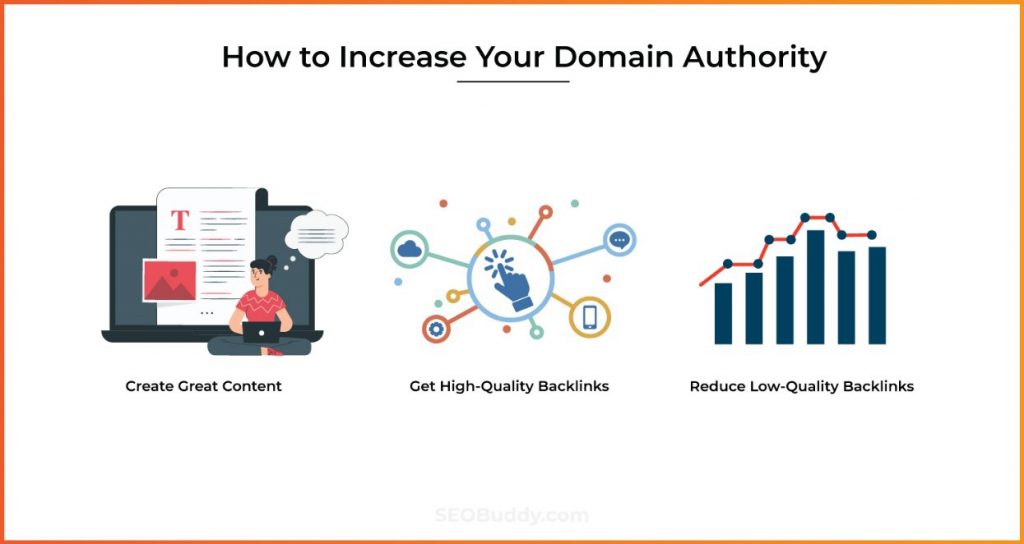
Tip 1: How to Increase Your Domain Authority through Content
In our list of tips on how to increase your domain authority, content takes the lead.
You can increase domain authority naturally by creating great content that makes high-quality websites want to link to your website.
If you have an informative resource on your website, people will naturally reference it in their own content. These are known as editorial links.
How can you create content that attracts editorial links?
Here are a few pointers.
1. Create Informative and Useful Content
One of the main principles of how to increase your domain authority: Create valuable content.
Authoritative websites do not link to shallow content.
Your content should cover a topic in-depth and stand out from other content on the same topic. Most importantly, make sure you provide accurate information.
Do adequate research and find data to back up your points, such as up-to-date statistics and studies.
It’s even better if this data comes from your own studies and surveys.
Why is data accuracy important?
There is a lot of fake news circulating online.
According to Statista, one of the main concerns for about half of consumers is reading a news story that is completely fake and thinking of it as true.
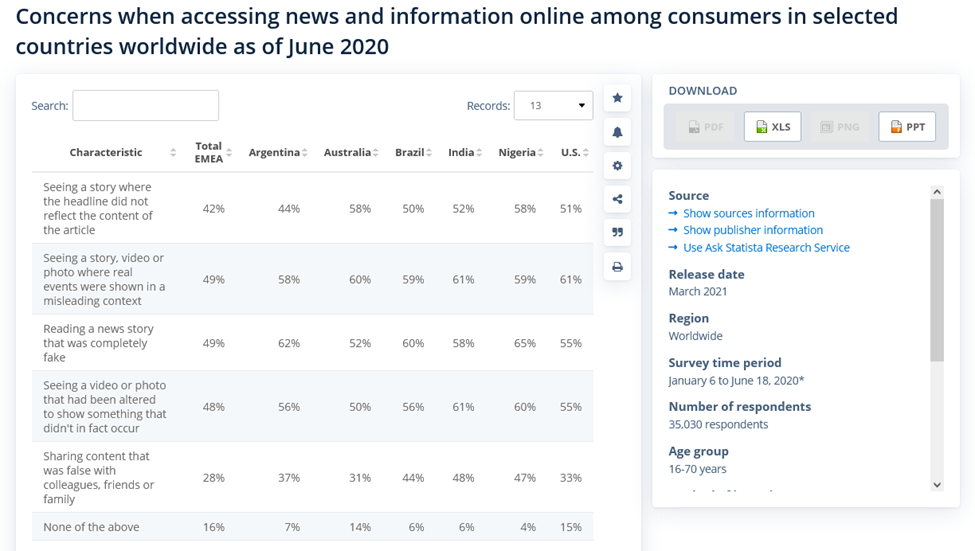
For this reason, journalists of reputable news sites are keen to back up their content with reliable studies and data.
If your website can be the primary source of this solid data evidence, you’ll be sure to attract a lot of quality backlinks.
It’s also a great idea to write long-form content.
According to research by HubSpot, blog posts with 2,500 words and above get the most backlinks.
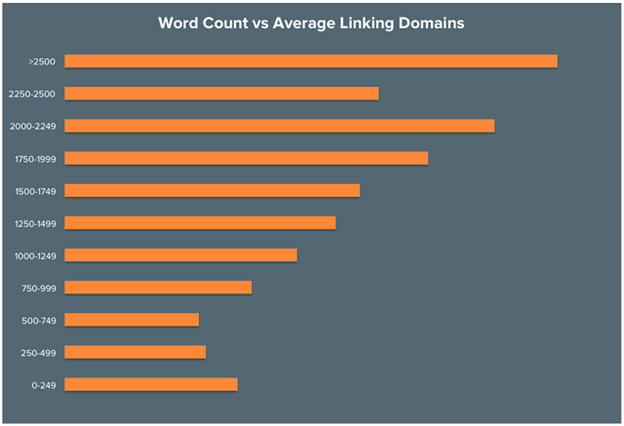
With long-form content, you can cover a topic in detail and show your expertise in the field.
Remember to keep your content free from plagiarism.
2. Create Content that is Easy to Read
Most people skim through an article to find important information. They don’t read the entire article.
A large block of text is not easy to skim, so most readers will skip it. Always make your content as readable as it can be.
Here are a few tips on how to increase your domain authority by making your content more readable.
- Use a balanced mix of long and short sentences to give your content a more natural rhythm.
- Break up your text with lists, paragraphs, headings and subheadings. More white space makes your content easier to scan
- Avoid complex words where there’s a simpler alternative.
- Make your article flow naturally by using transition phrases.
- Avoid passive voice. The active voice makes your message more focused.
A tool like the Hemmingway Editor can help with this.
It’s a free tool that analyses your article for the use of passive voice, hard words, and long sentences.

3. Meet the Search Intent of Your Audience
In this section, you will learn how to increase your domain authority by meeting search intent.
Search intent is the reason behind a person’s search on the internet. Your content should respond directly to this reason.
Here are the four types of search intent.
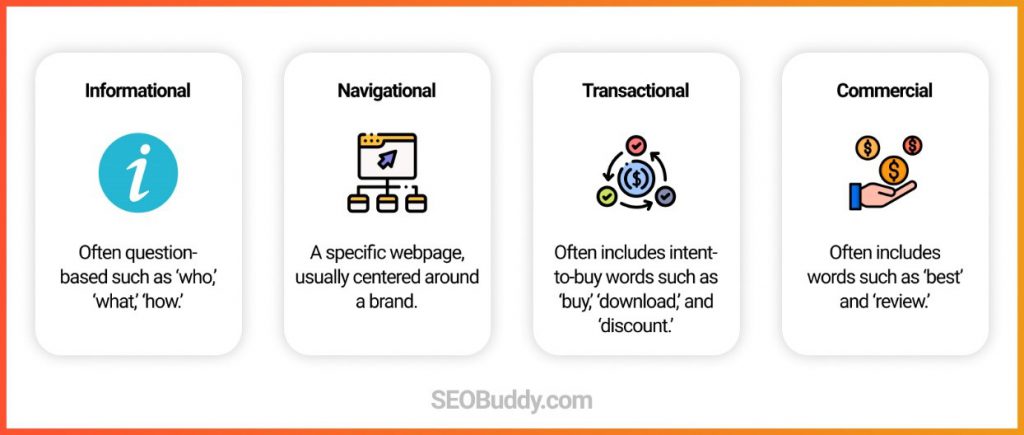
Authority websites will not link to your content if it does not meet their readers’ search intent.
How do you find the search intent behind a keyword?
By searching for that keyword on Google and analyzing the results on the SERP.
The top-ranking results will show you which types of content Google deems fit to rank high for that keyword.
For instance, here are the results from a search for the keyword “domain authority checker”.
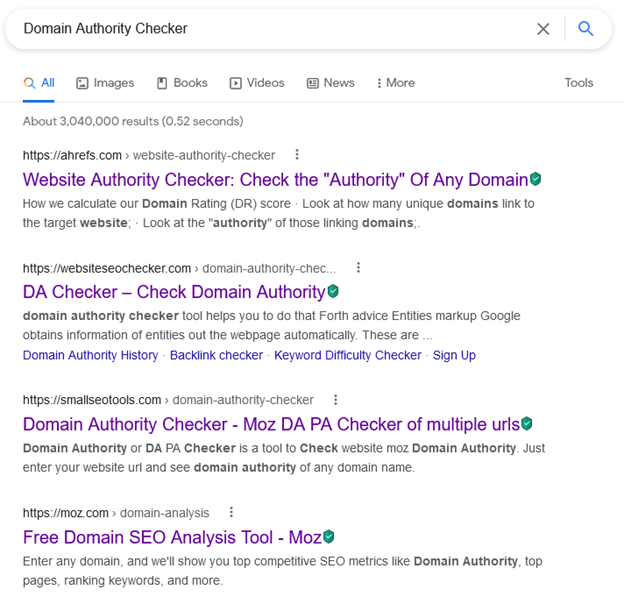
The top results are for tools for checking domain authority.
It means that according to Google, the searcher is not looking for a guide on domain authority. They are looking for a tool.
4. Don’t Be Afraid of a Little Controversy
Learn how to increase your domain authority using controversial content.
Controversial topics have the potential to go viral. And this means an increase in backlinks.
Here is an example of a controversial article written by Jon Morrow on Penelope Trunk.

How is this article controversial?
Most people believe in getting the highest grades in school. But in this article, Jon says it could be a waste of time.
It’s a thought-provoking article that has 281 comments from people sharing their thoughts on the topic.
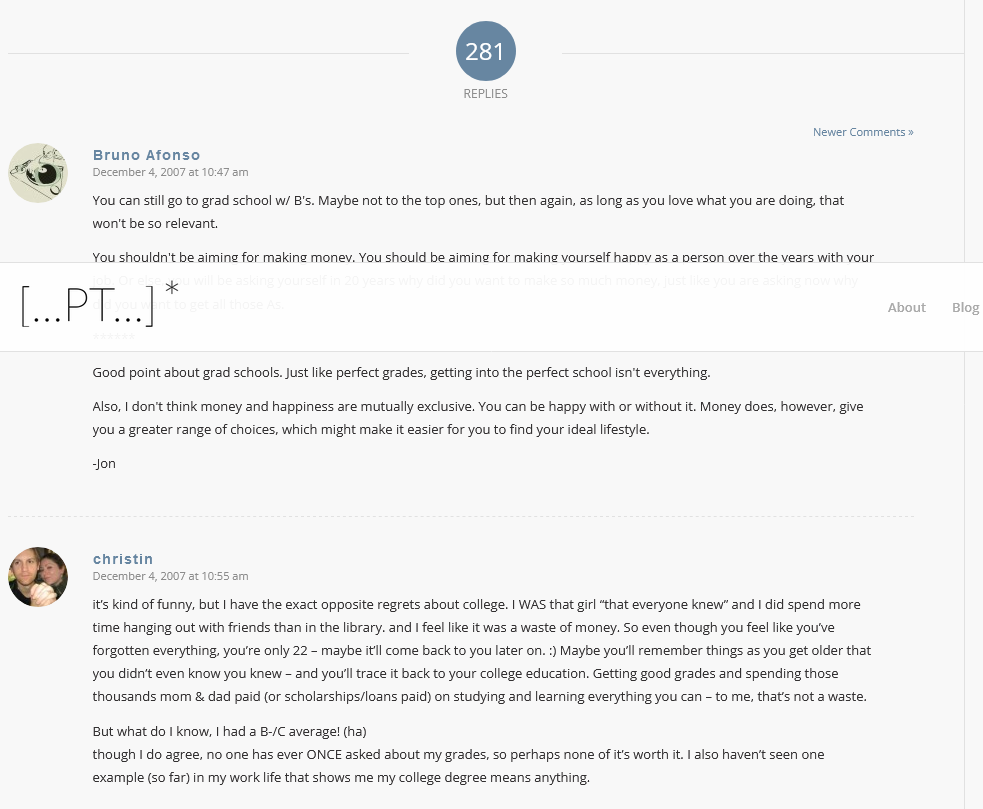
However, don’t just share your opinion. Back it up with verifiable data.
Remember that not everyone will agree with you. You’ll be painted devil and angel in equal measure. But the good news is that the engagement rates will increase.
There are several ways you can make controversial topics work for you:
- Provide surprising facts against an easily held assumption
- Stir up a debate by choosing a topic with a strong emotional charge
- Tackle a topic where you present a strong opinion
A word of caution: If you don’t handle controversial topics properly, it can backfire. You need to be 100% sure about your facts and tackle the topic from all perspectives.
Give strong reasons for the side you choose to favor.
Here are a few pointers on how to increase your domain authority through controversial topics:
- Remain polite and professional and respect the opinion of others.
- Stay away from sensationalism. Evoke emotions among your audience, while also providing useful and accurate information.
- Don’t choose topics that are too taboo to have a healthy discussion.
- Engage with your readers in the comments section and keep the conversation going.
5. Update Old Content
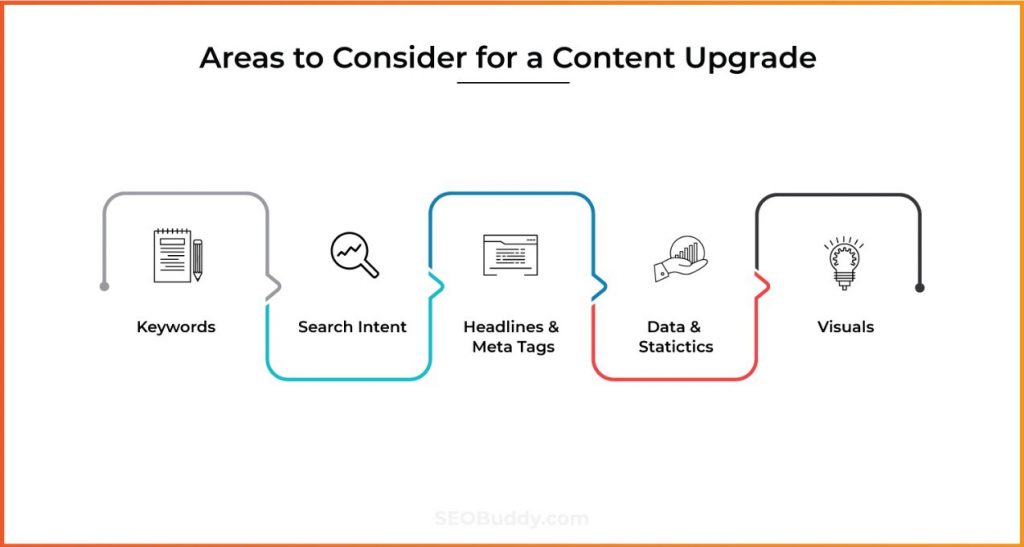
Don’t let your old posts lie dormant when they could be attracting more backlinks. Conduct a content update at frequent intervals to put your old content to work.
Check the page authority (PA) of the old content on your website.
Low page authority means the content on the page needs improvement.
A few tweaks can transform it into the quality that attracts backlinks.
To start with, find the articles that need an update.
Besides page authority, consider changes in traffic to a page and its engagement rate.
A page with high traffic and low conversions or low traffic and high conversions has a high potential to perform better.
The same applies to content that was once popular and had plenty of shares from readers but now goes unnoticed.
Here are a few tips on how to increase your domain authority through a content update:
- Find additional keywords that you haven’t included in your content. Pay attention to long-tail keywords and latent semantic indexing (LSI) keywords.
- Analyze the search intent and update your content to meet it.
- Use a more captivating headline, title tag, and meta description.
- Update your content with recent research data and statistics.
- Add fresh visuals.
Once you’ve updated your old blog posts, update the publish date. However, you should retain the same URL even after the update.
This is because the URL has already earned some ranking from Google. Creating and optimizing a new URL means you’ll be starting from scratch.
6. Choose More Niche and Specialized Topics
When high authority websites like news sites discuss a topic, they cover broad topics in moderate detail or write content that touches multiple topics lightly.
See this article on Forbes titled “What Is Content Marketing?”
Content marketing is a broad topic. So they touch several subtopics briefly.
If you check the point on Podcasts under the section covering Five Content Marketing Examples, for instance, there is a link to a blog post on reasons to own a podcast. It allows the reader to learn more about podcasts.
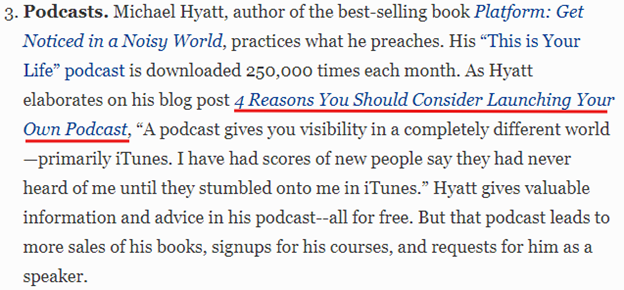
Turn your website into the source of information these authority sites can link to.
You can achieve this by keeping the focus of your article as specific as possible. It will be easier to provide real value on one specialized topic than a broad topic.
For instance, instead of focusing on the broad topic “social media marketing”, “social media marketing for small businesses” is more specific. It’s also easier to rank for.
Go as deep as you can or, better still, create an in-depth guide on it.
It should contain everything on the topic. Make it the ultimate guide that content creators link to whenever they are addressing the subject.
Here’s how to increase your domain authority by creating a great in-depth guide:
- Cover every aspect of a topic by dividing your content into multiple sections.
- For each section, create an outline to ensure that your content has a logical flow.
- Conduct thorough research for each section and treat it like a separate article.
- Add lots of visually-appealing and informative visuals to your content.
Once you have made an epic guide, promote it.
Find websites that have linked to other guides on the same subject. Let them know about your better and more comprehensive guide.
You can also reach out to non-competing website owners who would be interested in sharing the guide with their audience.
7. Publish a White Paper
Educate your customers while also earning backlinks by publishing white papers.
A white paper is an in-depth report that addresses a complex issue and problems related to it.
It’s a resource meant to help a reader understand an issue and solve a related problem.
A white paper is similar to an e-book. But it’s more technical and detailed.
You’ll need to find and analyze statistics or original research from a reliable source.
Present your data in the form of charts, graphs, videos, images, and tables that help the reader make an informed decision.
A white paper gives you visibility and builds authority. If it carries useful insights and accurate data, it’ll attract backlinks from authoritative websites.
Here’s how to increase your domain authority by creating a white paper:
- Choose a topic that addresses a common pain point of your audience and has little content written about it.
- Write the white paper logically and objectively. Back any claims you make by citing your source.
- Use visuals to make information easier to understand.
- Avoid making the white paper sound like a sales pitch. It should be packed with useful information for the reader.
- Don’t just provide research findings and leave it at that. Explain how the reader can utilize this data on a practical level.
- Your content should have a responsive design (mobile-friendly).
Here is an example of a white paper from the Content Marketing Institute on B2B Content Marketing. The backlink analysis of the page shows over 4,000 backlinks.

Once your white paper is ready, create awareness around it using social media promotions, email marketing, etc.
8. Publish Regularly
Create and publish great content regularly.
If, for instance, you create a lot of content in the digital marketing space, it’ll establish you as an authority in the niche.
Your website will become the go-to source for high-quality content in the field of digital marketing and other publishers and content creators will voluntarily link to it.
This will increase your domain rating.
Check out our blog.
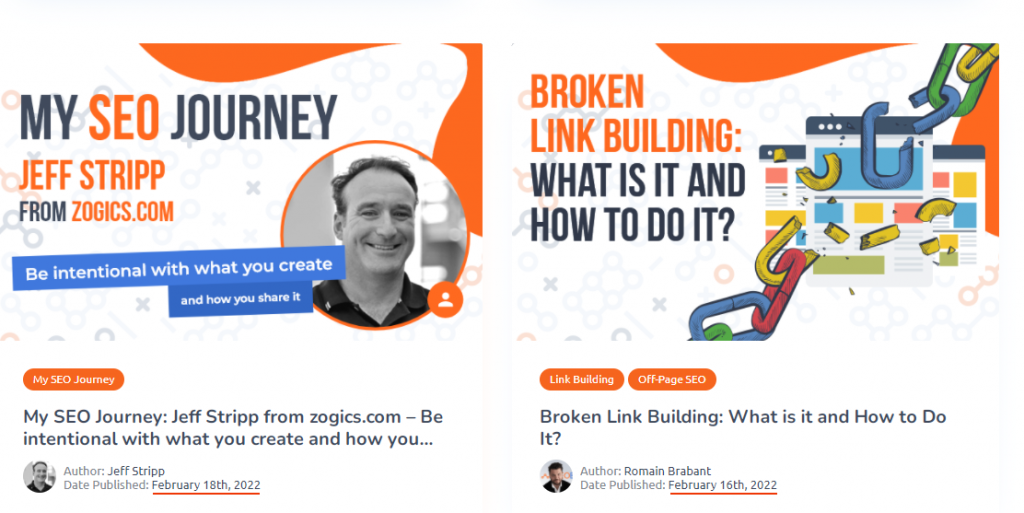
We publish valuable articles several times a week. This builds our authority in the SEO industry.
Plan your content ahead of time. Use a keyword planner and content calendar to maintain a regular publishing schedule.
Tip 2: How to Increase Your Domain Authority by Getting Quality Backlinks
High-quality backlinks are not just essential when calculating your site’s domain authority. They also increase referral traffic to your website.
Here’s how to increase your domain authority by getting backlinks from high-authority websites.
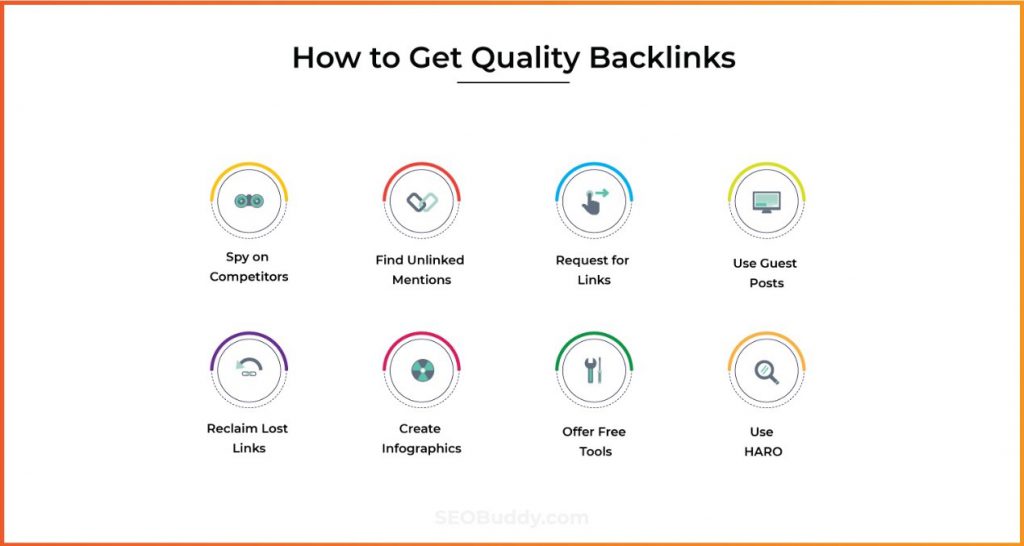
1. Keep Tabs on Your Competitors
Your competitors’ backlink profiles can show you how to increase your domain authority.
Keeping tabs on their backlink profile is an excellent way to find high-value link opportunities from sources that have already shown an interest in your niche.
There are three strategies you can use.
Strategy 1: Reach Out to the Websites Linking to Your Competitors
Here are three steps on how to increase your domain authority by copying your competitors:
- Find out the top websites linking to your competitors’ sites. Chances are that they might be interested in linking to your site as well.
- Check which type of content they are linking to and create even better content on similar topics.
- Reach out to these sources for opportunities to build backlinks.
You can use Moz’s Link Explorer to find the linking domains of your competitors.
You’ll get a comprehensive list of the inbound link sources and their respective domain authority.
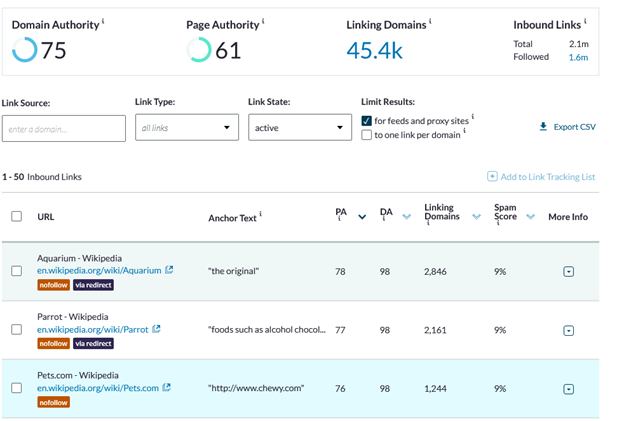
Research your competitors’ backlinks weekly or bi-weekly. Take advantage of these opportunities while they’re still fresh.
Strategy 2: Find and Claim Broken Links to Your Competitors
Here is another effective tip on how to increase your domain authority using your competitors.
Find websites in your industry that have:
- Shut down
- Changed their name
- Moved their website to a new URL
- Discontinued a product or service
- Stopped updating a resource
Let’s see how to increase your domain authority by taking advantage of these opportunities for backlinks.
Enter the URL of the page or website in an SEO tool like Semrush.
Check the high-quality websites that are still linking to these outdated or non-existing pages, URLs, or products.
Offer them a better and more resourceful page on your site that they can link to.
Strategy 3: Reach out to Resources that Have Listed Your Competitors
It’s also important to find websites that have listed your competitors and left you out.
This can include resource pages, or articles containing a roundup of products, services, or any other information in your niche.
Here is how to increase your domain authority using this strategy:
Search for your competitors’ names, space, then the minus(-) symbol, and finally the name of your company.
It will narrow down your search to results that include your competitors and exclude you.
Here is an example of a search for results containing Amazon and Etsy but excluding eBay.
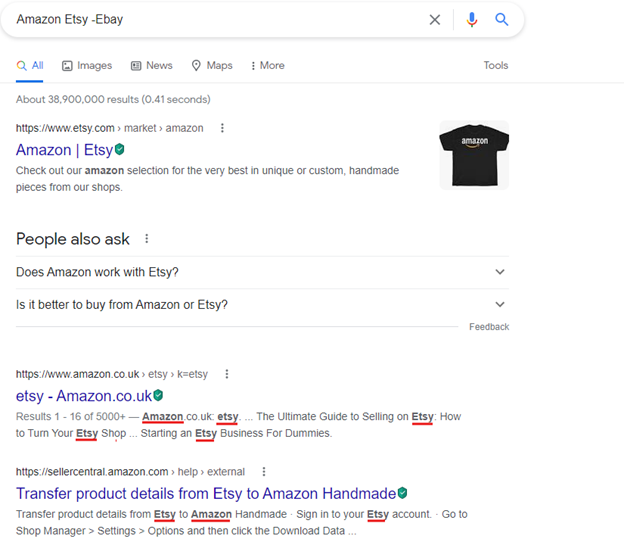
See how the results show all results containing Amazon and Etsy but missing eBay?
Reach out to the high-authority websites that come up in your search for backlink opportunities.
2. Get Links From Unlinked Mentions
Sometimes, authoritative websites may mention your brand or content but may not link to it.
Reach out to the publishers or webmasters of these websites and see if they can add a link to these mentions.
Let’s look at how to increase your domain authority by finding these unlinked mentions?
Do a Google search for your company’s name in quotation marks to get results with an exact match.
For instance, a search for “Facebook” will only bring websites that have the name Facebook.
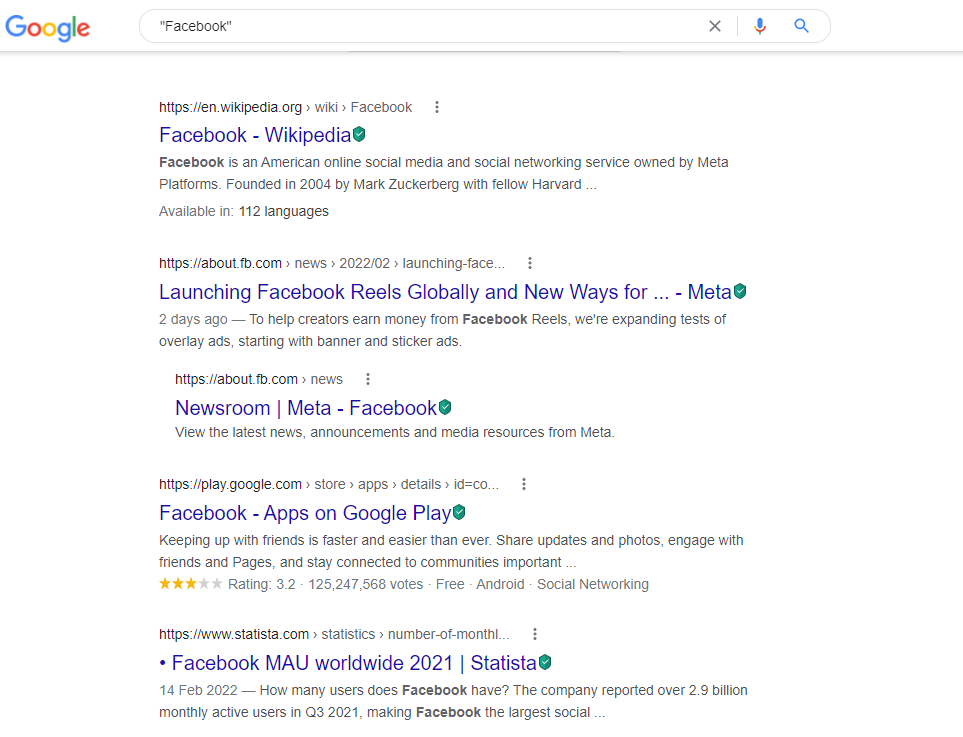
Analyze the search results for high-quality backlink opportunities.
Do the same for images.
Here is how to increase your domain authority using unlinked images.
Find authoritative websites that have used your proprietary images and infographics without adding a link to your website. Request for a link.
You can find these images using Google’s reverse image search function.
Use these steps:
- Type images.google.com in the search bar.
- Click the camera icon to search the web by image.
- Select “Upload an Image”.
- Upload the image you want to search.
- Google will show all web results containing the image.
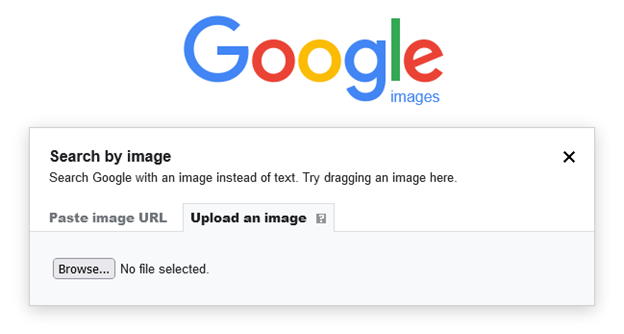
Reach out to the websites. Request them to credit your website with a link.
You can also use a social listening tool like Mention. Set up alerts for any brand mentions in blog posts and news sites.
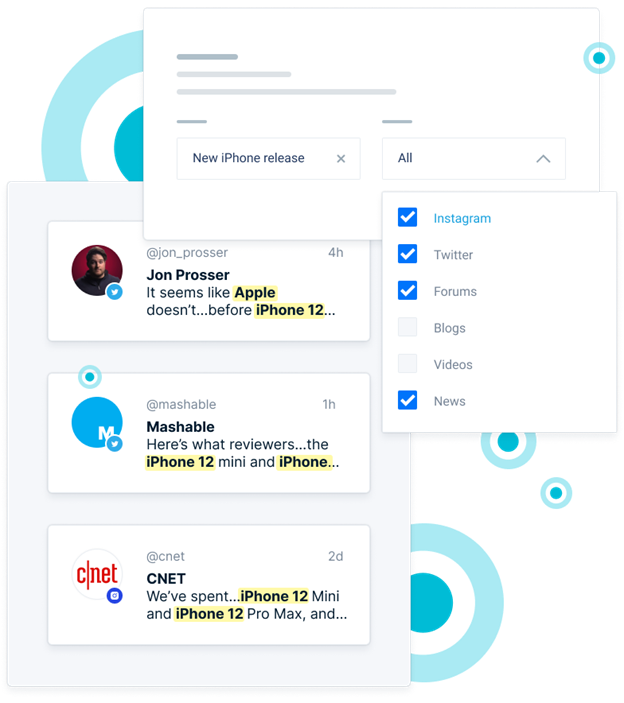
3. Ask for Backlinks
You’ve created relevant and useful content? Great.
Now get the right people to find it. Contact the webmasters of authoritative websites and ask for backlinks.
But it’s not that straightforward. Build relationships with them first to increase the chance of getting a positive response.
Here are a few tips on how to increase your domain authority by building relationships:
- Link to other websites on your blog. The more you link to other high-authority blogs and websites, the more links you’ll get back.
- Make comments on other blogs and give your expert opinion on topics/discussions in your niche.
- Build relationships with influencers by inviting them for expert roundups. You can later ask these experts for guest post opportunities on their blogs.
- Make friends with other bloggers and webmasters in real life. Develop genuine, real relationships. Increase your network to increase your options for inbound links.
- Write testimonials or reviews for a company’s products or services and add a link back to your site. It’s a win-win for both parties. You get a backlink and they get social proof.
4. Add Guest Blogging to Your To-Do List
Any expert on how to increase your domain authority will tell you that guest posts can earn you backlinks.
It will help you establish your expertise in your niche and reach a wider audience.
Create great content and pitch it to reputable websites in your niche. If they accept, request them to give you a link.
When you look for guest posting opportunities, consider the value of the link.
Will the backlink you get be a dofollow or nofollow?
A “nofollow” tag instructs search engines not to visit the destination website or boost the destination site’s ranking based on the link.
A follow link will increase your domain authority and boosts the rankings of your website
But even if the link is a “nofollow”, you can still benefit from the referral traffic it’ll bring to your site.
Stick to high-quality guest posting.
You’ve probably come across this warning by Google against the use of link schemes to manipulate search rankings.
There’s a mention of ‘large-scale’ guest posting.
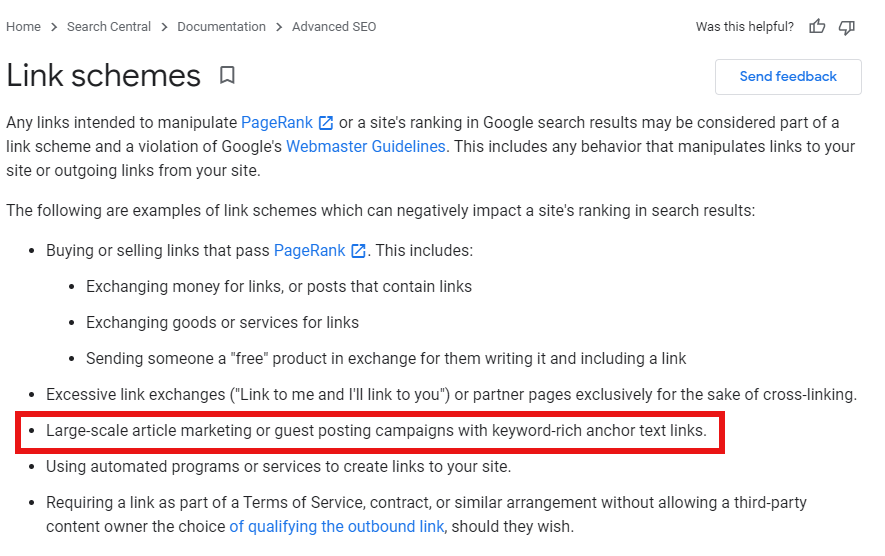
The warning here is against poor-quality guest posting that provides no value to readers.
To avoid getting on Google’s bad side, here are some best practices on how to increase your domain authority using guest posts:
- Avoid spinning articles – This is a manipulation tactic where you post different versions of the same article on multiple sites for backlinks.
- Stay away from thin content – This is content that is lacking in depth and usefulness.
- Do not duplicate content – This means posting the same article on multiple websites for backlinks.
- Guest post on authoritative websites– Check the domain rating of the site you’re targeting and only go for sites with good content quality.
- Target websites with a similar audience – Analyze the audience of the websites you intend to reach out to for guest posting. Choose the ones that have a similar audience as your target audience.
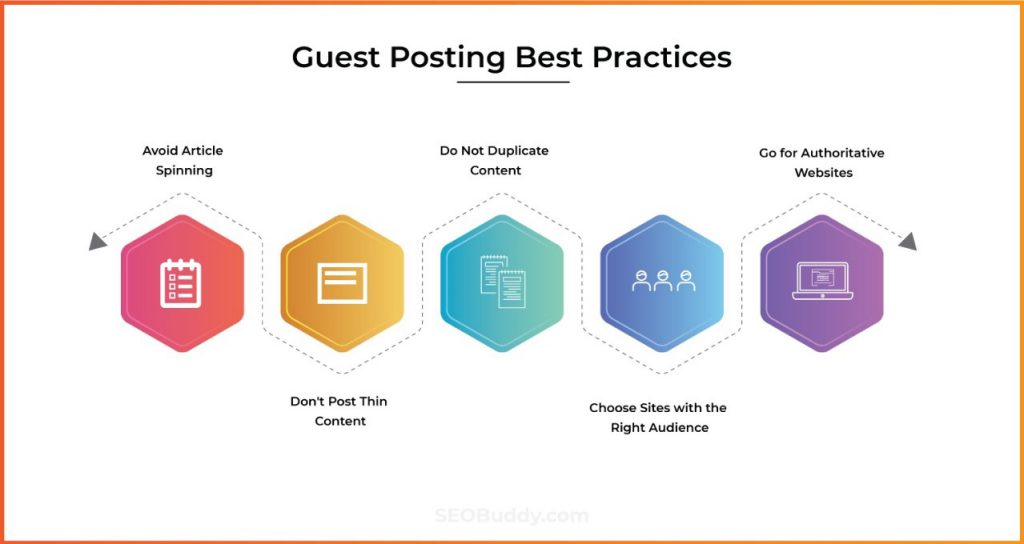
5. Follow Up on Lost Links
Sure, you can master how to increase your domain authority by getting quality backlinks, but if you keep losing them, your efforts will go to waste.
Monitor your backlinks using a tool like Semrush.
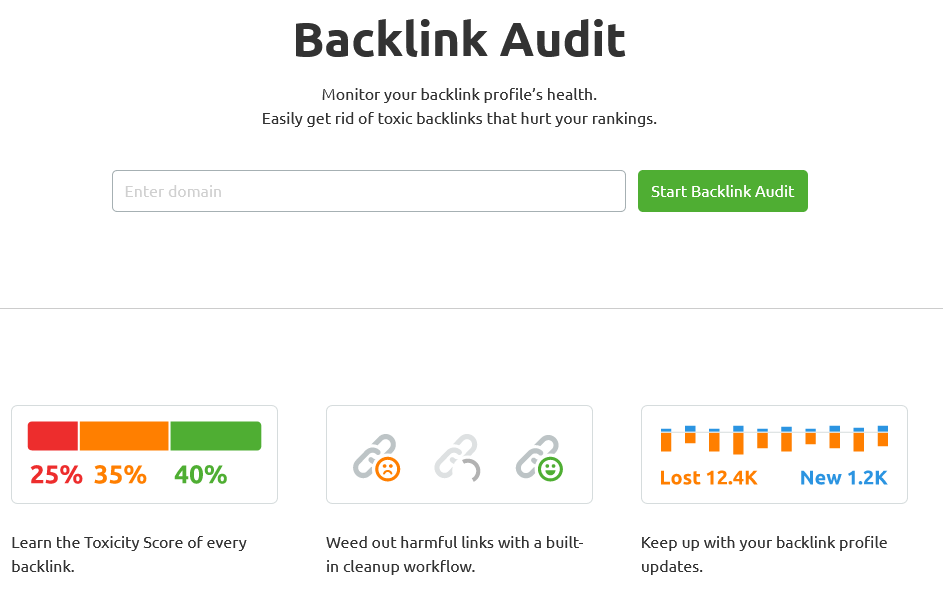
Find links to pages that no longer exist. In such a case, you can add a 301 redirect to a new relevant page or reach out to the site’s webmaster with the correct link.
Don’t ignore the backlinks that you’ve lost.
Engage with the webmasters to find out the reason behind the lost link. They could have:
- Removed the link by accident.
- Made a website redesign that has led to the lost link.
- Deleted the page that had the backlink.
For all these, it’ll be easy to reclaim the backlinks.
Also, it’s easier to recover backlinks you’ve recently lost than those you lost a while back. So, monitor your links regularly and keep reclaiming lost links.
6. Use Infographics and Other Visuals to Attract Backlinks
Master how to increase your domain authority using visuals.
You already know that visuals like GIFs, images, and videos, are important for engaging users with your content.
According to a study by Venngage, marketers reported that original graphics played the biggest role in helping them achieve their marketing goals.
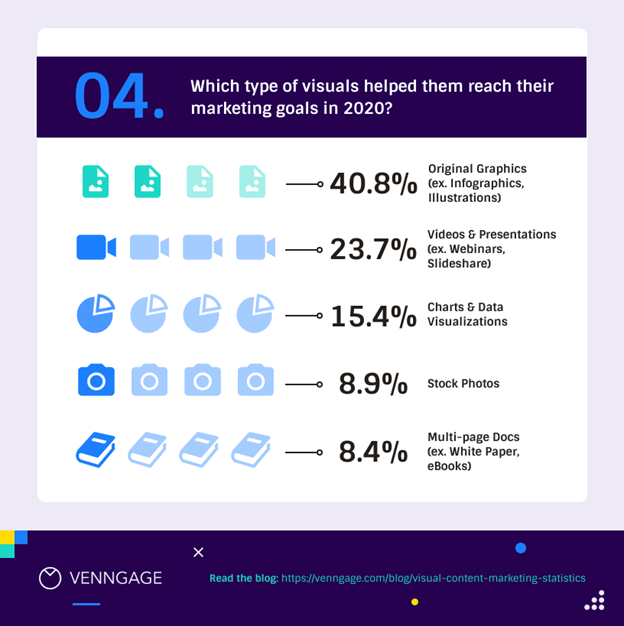
But did you know it can also help in building backlinks?
Well, they do.
Consider this post, for instance. It’s a guide on keywords.
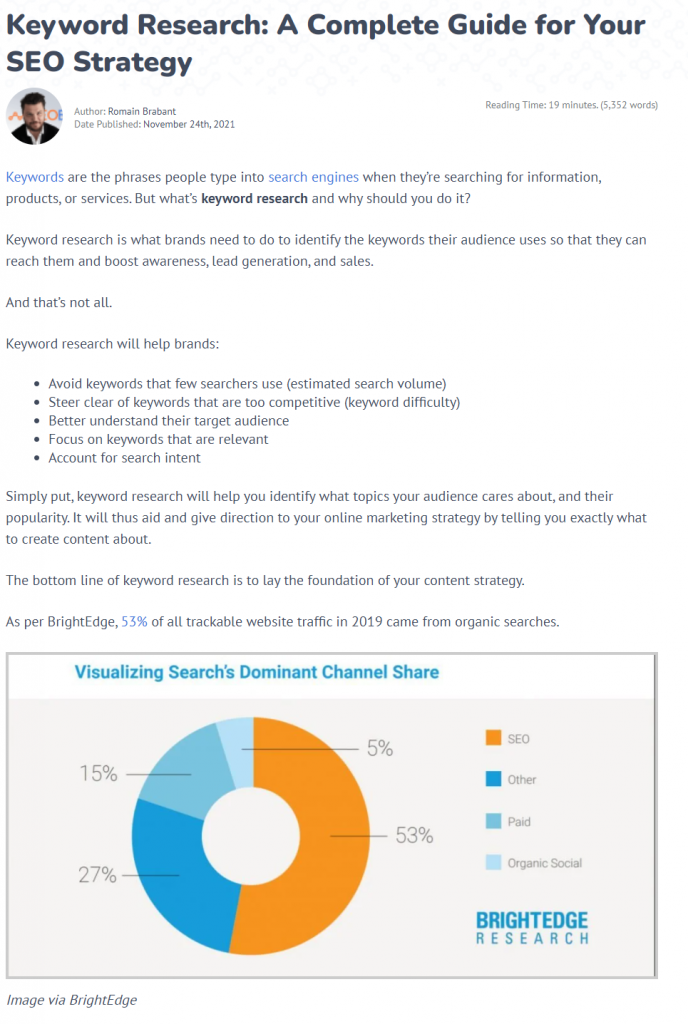
We’ve included a link to the source of the chart.
If you have valuable images on your website, other content creators will likely use them on their site and link to your website to cite the image’s source.
Infographics, for instance, make complex and lengthy topics easier to understand and more enjoyable.
Publishers love sharing them. But they take time and effort to make.
If you create an original infographic covering a hot topic in your industry, webmasters will take the shortcut and simply share it with a link to your website.
You can conduct surveys and create an infographic based on the data you collect. Or get raw data from a trusted research site and use it in your infographic.
Here are a few tips on how to increase your domain authority by creating infographics that attract links from high authority sites:
- Cover the topic with fresh ideas, instead of rehashing the same old ideas.
- Keep it short and tightly focused. This makes the data easier for readers to digest and remember.
- The best content should be at the top of the infographic.
- Make the design interesting. Hiring a professional designer cannot hurt.
Pitch relevant websites with the infographic and complement it with a short blog post.
7. Offer Free Tools
Let’s see how to increase your domain authority using a free tool.
Offering free tools is one of the most effective ways to draw traffic to your website and earn backlinks.
A free and useful tool on your site draws backlinks from articles that mention or recommend the tool.
Why would they do that?
Because they would want to provide free and useful resources to their audience to help them find solutions to their problems.
Free tools are widely popular and get mentioned a lot if they are genuinely useful.
For instance, CoSchedule has a Headline Analyzer that gets them thousands of backlinks.
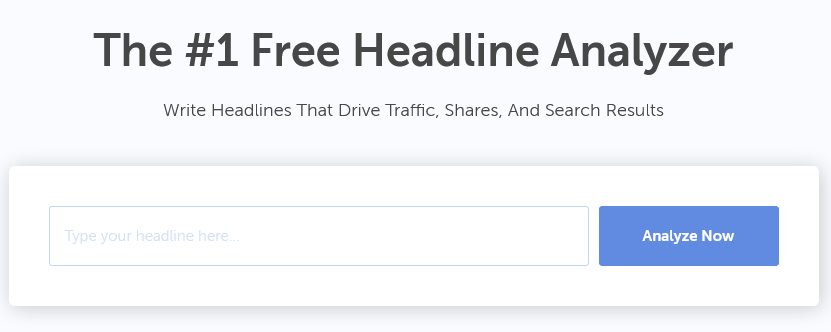
An analysis of their backlink profile shows over 672,000 backlinks to the Headline Analyzer page.

Here’s how to increase your domain authority by offering free tools/resources:
- Offer one of the features of your product for free
- Create a free version of your tool
- Offer free templates and worksheets
Ensure the free tool is useful for its intended users. It should offer an effective way for them to meet their objectives.
Promote it using guest posts, blog posts, email outreach, and social media promotions.
We know creating a free tool is not easy. But you can be sure that the results in the form of backlinks and leads generated will be worth it.
8. Become a Reliable Source for Bloggers and Reporters
Getting backlinks from authoritative news sites is not as hard as most people may assume. And it’s one of the sure ways to increase your domain authority.
We’ll show you how to increase your domain authority using the Help a Reporter Out (HARO) platform.
HARO is a free service. It’ll connect you with journalists and bloggers who need industry experts to answer their questions. In return, they give links and exposure.
To get started, register as a source and sign up.

Fill in a few basic details about yourself and your business.
On the dashboard, you’ll get the option to choose the category you’re interested in. If you want to receive requests in all categories, tick Master HARO.

Find requests that are relevant to your industry. If you register for the free plan, you’ll get three requests via email from Monday to Friday.
Here is how these requests appear.
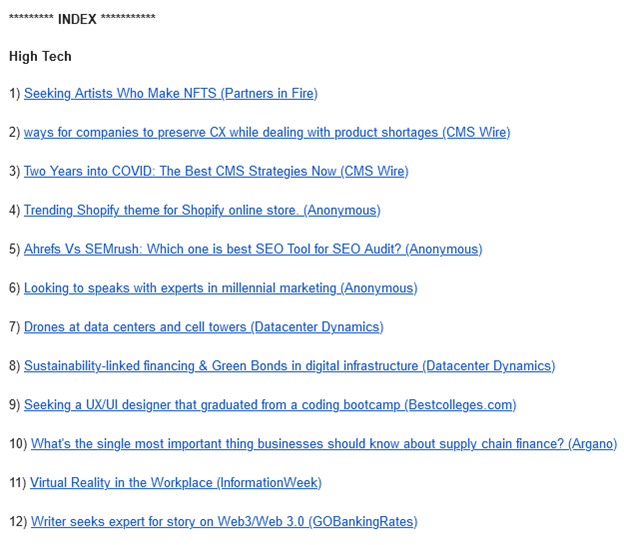
Once you’re interested in a request, send a brief and valuable pitch to the reporter or journalist.
If the journalist uses your pitch, they’ll mention or link back to you. This will increase your domain authority.
Here are some tips on how to increase your domain authority using HARO:
- Submit your pitch fast, preferably within an hour. Everyone using HARO will see the same requests you receive and the journalist is likely to use the first best responses.
- Your pitch should show your expertise in the field. It should encourage journalists to prefer your answer over others’.
- Be consistent in pitching. But only respond to requests that will give you high-quality backlinks.
- Make it easy for the reporter to provide a backlink by including a downloadable link containing your headshot, company logo, and bio.
- Stick to the rules HARO recommends for sources.
Tip 3: How to Increase Your Domain Authority by Getting Rid of Low-Quality Links
You already know this, not all links are equal. And this is an important factor to keep in mind when learning how to increase your domain authority.
You need to secure high-quality links from reputable sites like renowned magazines and Wikipedia.
But you also need to get rid of the poor-quality links. Bad links could hurt your domain authority score instead of increasing it.
This begs the question:
How can you find poor-quality links?
A backlink audit tool like the one provided by Semrush can help you identify and weed out toxic links.
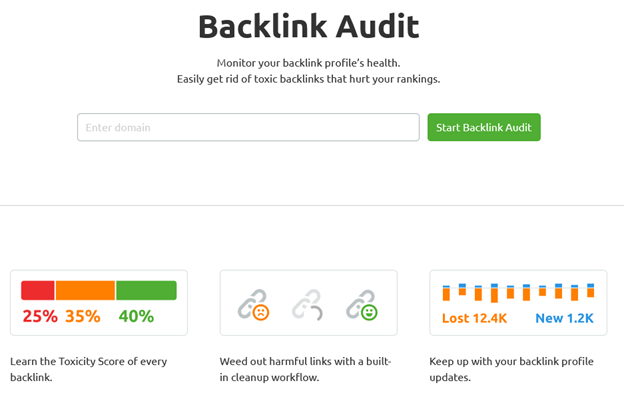
Here are some examples of poor links you should eliminate:
- A link that does not add value to the article or website it’s posted on.
- A link placed on a website that only acts as a repository of posts with outgoing links (link farms).
- A website whose target audience is unrelated to your website’s target audience.
- A link in a comment section that adds no real value to the conversation.
- Backlinks from websites that sell links.
Semrush will also provide you with the toxicity score of various links. So you don’t need to put much effort into finding bad links.
Once you identify these links, here is how to increase your domain authority by getting rid of them.
1. Add a “Nofollow” Tag
Contact the website owners and request them to either remove the link or devalue it by adding a “nofollow” tag.
A nofollow tag means the poor-quality link will not affect your domain authority.
2. Disavow the Links
If you can’t get the other website to remove the bad link, you can disavow the URL of the domain or page in question.
Use the disavow tool on Google’s Search Console.
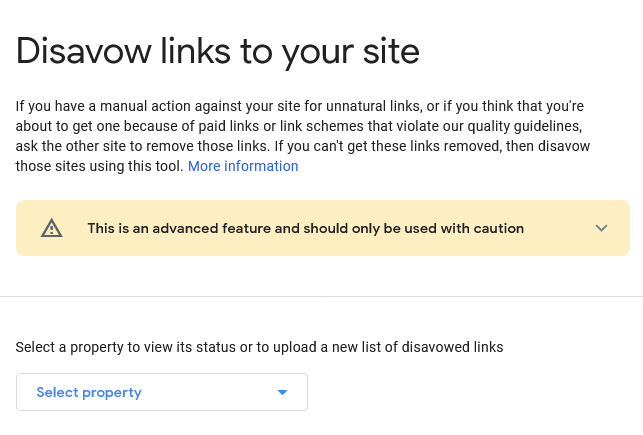
When putting these tips on how to increase your domain authority into practice, prioritize the quality of your backlinks over the quantity.
FAQs
1. What is the fastest way to increase your domain authority?
If you’re wondering how to increase your domain authority (DA) fast, use tips to come up with a link-building strategy:
- Take a leaf from your competitors’ backlink profile.
- Reach out to websites that have linked to missing or outdated pages on your competitors’ sites and offer a better alternative.
- Ask directly for backlinks from bloggers and webmasters.
- Follow up on unlinked mentions and images.
- Follow up on lost and broken links.
- Get rid of low-quality links.
However, the most sustainable and long-term answer to how to increase your domain authority is by creating great content.
2. How long does it take to increase your domain authority?
It can take months or even years to substantially increase your domain authority.
But as long as you’re actively putting the best practices on how to increase your domain authority into action, it will gradually increase.
3. How to increase your domain authority in 2022?
Here’s how to increase your domain authority this year:
- Create great content.
- Check your competitors’ backlink sources and reach out to them
- Connect with webmasters and bloggers
- Claim links for unlinked mentions
- Get a good domain by guest posting
- Reclaim lost links, redirect links away from broken pages, and get rid of low-quality links
- Create and post high-quality original visuals
- Offer free tools
4. How often should I check my domain authority?
Even after you master how to increase your domain authority, it’s recommended to check your website’s DA score at least once a month.
Monitor the performance of your website consistently.
5. How are domain authority and page authority different?
Domain authority measures the ranking strength of an entire domain or subdomain. Page authority looks at the ranking strength of individual pages.
Mastering how to increase your domain authority will boost the authority of your pages.

Now it’s time to discover the other 102 steps that will get more organic traffic flowing to your website. Get the SEO Checklist here.
Want to get a sneak peek of what it looks like?
Enter your email and get a free demo version of the SEO Checklist.
How to Increase Your Domain Authority with Link Chest
You now know how to increase your domain authority.
A higher domain authority means your website’s ranking will improve as well. And this will lead to higher traffic and higher conversions.
A lot of work goes into finding the right backlinks.
But the good news is that there’s a shortcut.
Learn how to increase your domain authority and combine it with our comprehensive Link Chest for best results.
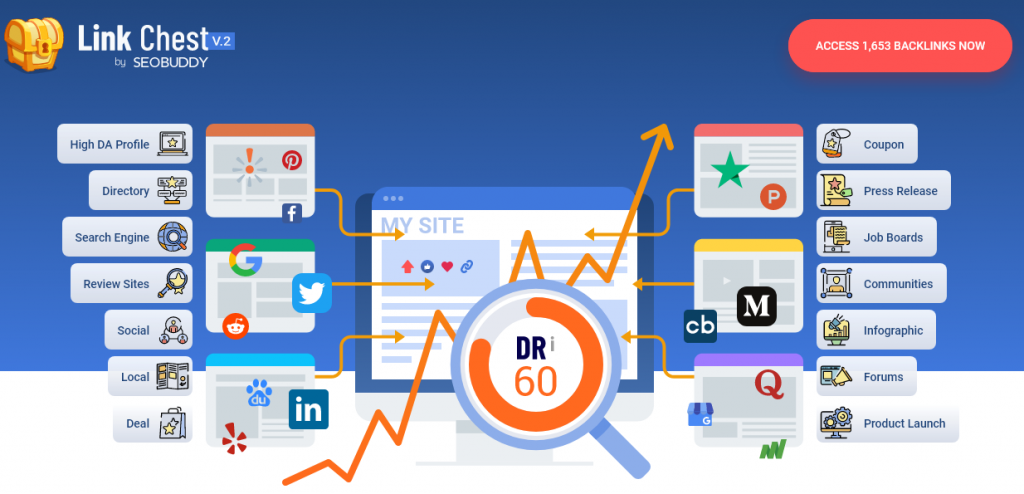
You’ll get access to over 1,900 backlink opportunities from reputable websites that’ll increase your website’s domain authority. If you have any questions on how to increase your domain authority, feel free to reach out to us and we’d be happy to help you with your SEO journey.




This is quite a lengthy piece but definitely is very helpful, now I have new ideas on how to increase DA. This is very elaborate and easy to understand and also because I can relate to some points given. And the tools, so glad you mentioned free tools in here that I can definitely use.
Thanks for sharing this very insightful content, I’m really really glad that I come across this content.
Very useful information, thank you.
Thank you for sharing such valuable insights! I particularly enjoyed how you explained it in a clear and concise manner. It has definitely broadened my understanding